Jaguar's Sportscar Racing history
Jaguar were the force in Sportscar racing in the mid 50s. The C and, especially, D-Types were amongst the last cars that could be driven to the circuit and then win the race outright.
A possible return with the beautiful V12 powered XJ-13 never happened and it wasn't until the mid-70s that Jaguars returned to the track. TWR had won the European Touring Car championship with the V12 powered XJS and, in the US, Group 44 were winning races with their IMSA GTP XJR5s.
As an experiment, Jaguar sent a couple of the IMSA cars to Le Mans in 1984 to judge their competitiveness. Although they weren't on the pace, they proved enormously popular with the crowd and persuaded Jaguar of the value of racing at Le Mans.
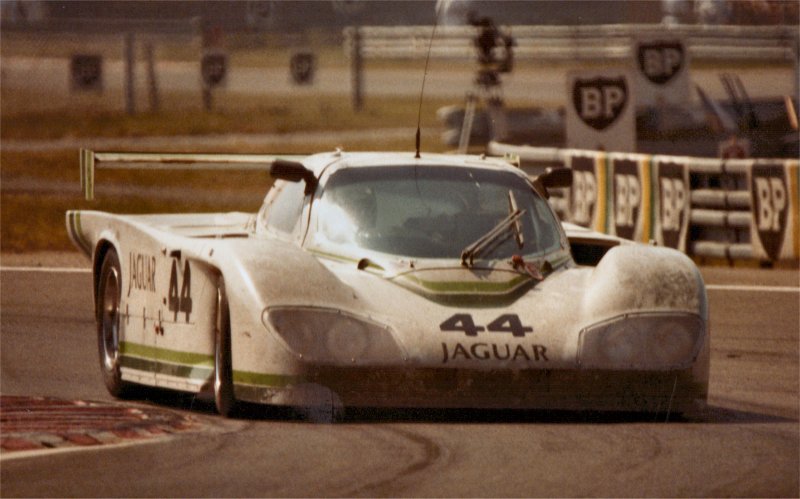
Perhaps a little harshly, Group 44 were cast aside as Jaguar's sportscar racing representatives on both sides of the Atlantic and TWR took up the mantle.
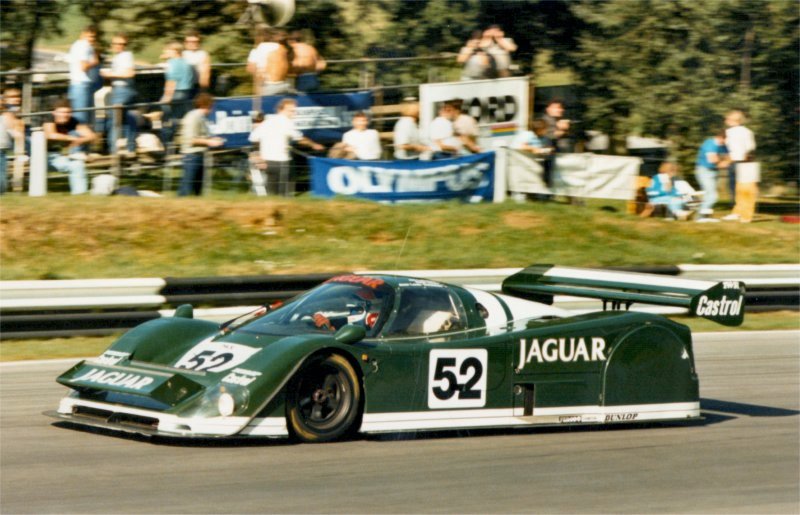
Their XJR-6 was first seen, in Jaguar's touring car colours, at races in 1985. It was, to be fair, a far more modern design than the IMSA cars, although they were constrained by the regulations. Early race results were mixed, but the main things were that a) they were great marketing for Jaguar and b) they sounded fantastic.
Success, even against the might of Porsche, was not long coming, however, as Eddie Cheever and Derek Warwick took victory at Silverstone in 1986 in front of a hugely appreciative crowd.
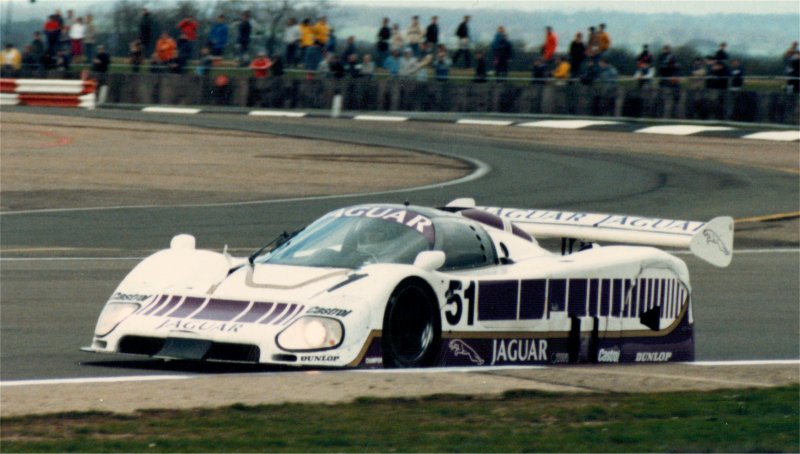
More successes followed and the Jaguar/Porsche battles of the next couple of years, merging into a three way battle with Mercedes, are the stuff of legend. Possibly the best race being the 1986 Spa race, where Thiery Boutsen's Brun Porsche beat Warwick's Jaguar by mere yards after 6 hours around the grueling Belgian circuit.
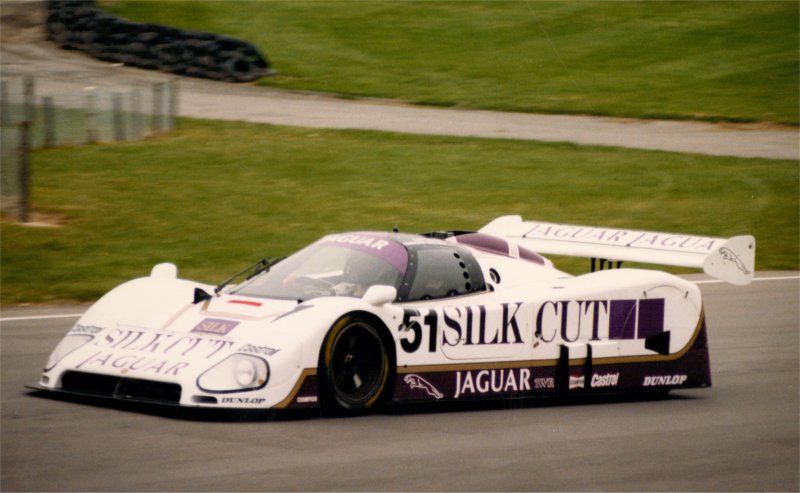
Brands Hatch 1986
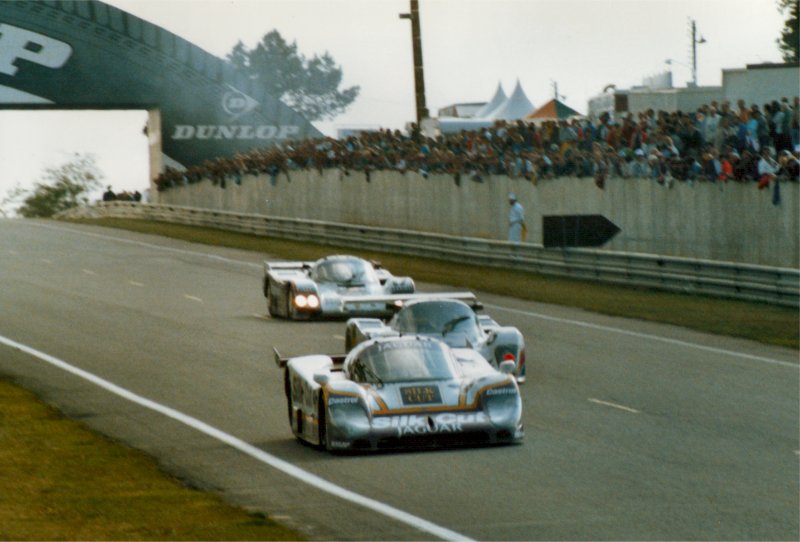
Le Mans 1987
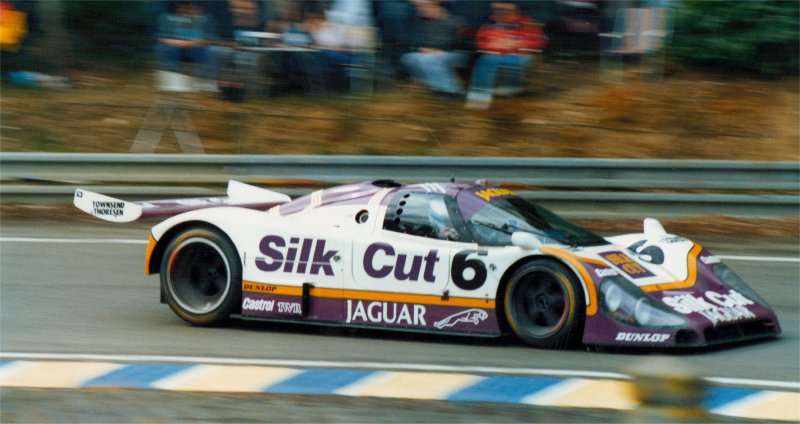
The special low drag, open rear wheel Le Mans 87 car
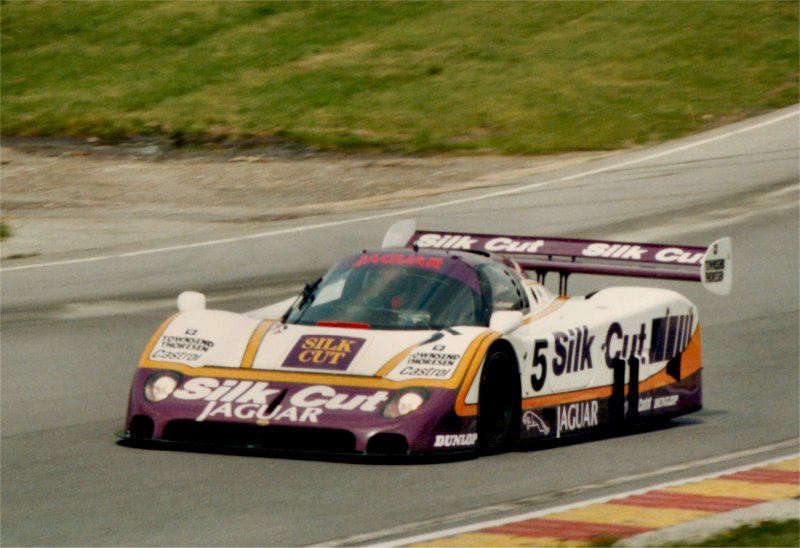
Victory at Brands 1987
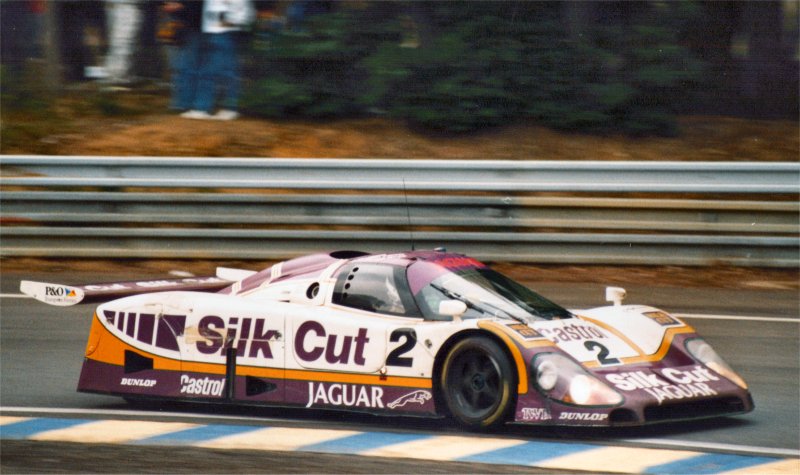
Le Mans victors 1988
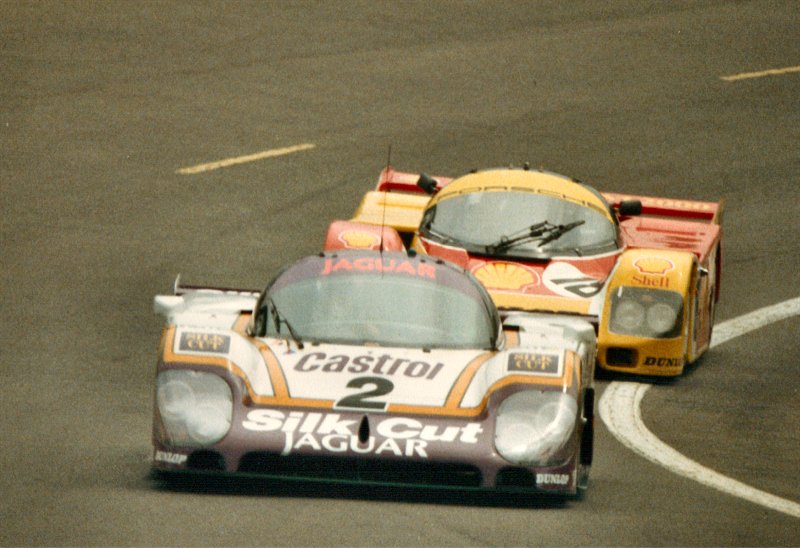
Jaguar vs Porsche and Le Mans 1988
However, Mercedes gradually upped the stakes in Group C and the V12 was deemed to have insufficient power to compete with the German marque's 5 litre V8 turbo engine. A V6 turbo was developed and installed in the XJR-10, but this was never an entirely successful engine, lacking the torque of the V12 and the power of the Mercedes V8.
The short lived, and ill-conceived, 3.5 litre championship gave Jaguar one last tilt at the title in 1991, when they stunned the competition with the XJR-14. This car was widely dubbed a two-seater F1 car and, with a Ford Cosworth V8, would have comfortably qualified for the British GP with it's time at Silverstone. In the early rounds the car mopped up and this was enough to clinch the WSC title again.
Despite their success, however, Silk Cut were unhappy with the state of sportscar racing and they, and Jaguar, soon withdrew.
They returned, to Le Mans in 1993, with the XJ220. This 'supercar' was powered by the V6 turbo from the XJR-10 and won its class, although it was later disqualified after a round of protest and counter-protests so typical of French motor racing events. In the end it was thrown out because Jaguars appealed (which was upheld) was lodged too late!
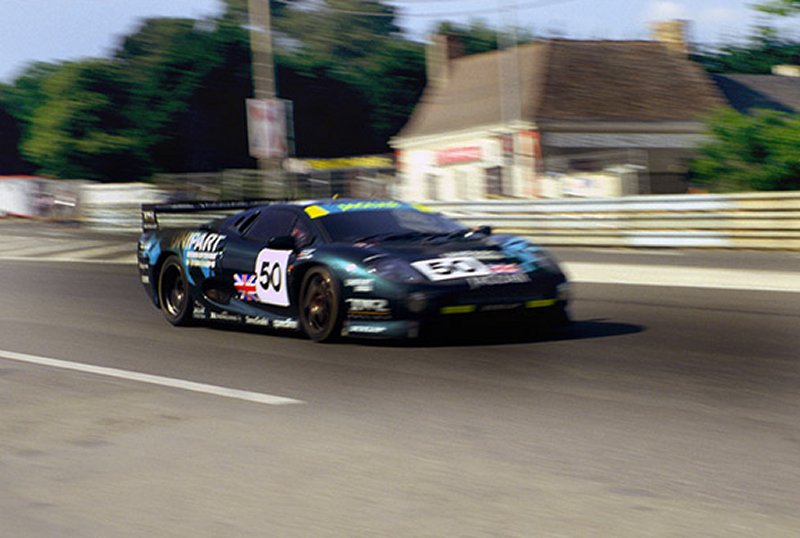
Jaguar vs Porsche and Le Mans 1988
Despite this success, the BPR rules did not suit the XJ220, which is a very heavy car and wasn't allowed such extensive lightening as was permitted at Le Mans. Therefore, the later race results for the XJ220, in private hands, proved disappointing.
In 2008, Jaguar took a tentative step back into the Sportscar racing world with a GT3 version of their highly praised XKR.
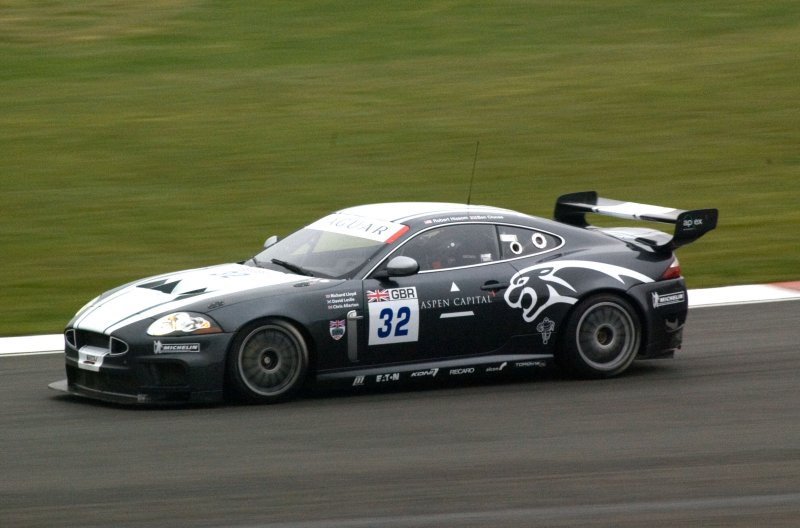
GT3 Jaguar XKR, Silverstone 2008
The XKR was being developed by sportscar stalwarts David Leslie and Richard Lloyd when they were sadly killed in a plane crash, but the team rolled the cars out at Silverstone carrying their names.
Back To The Sportscar Racing Page
